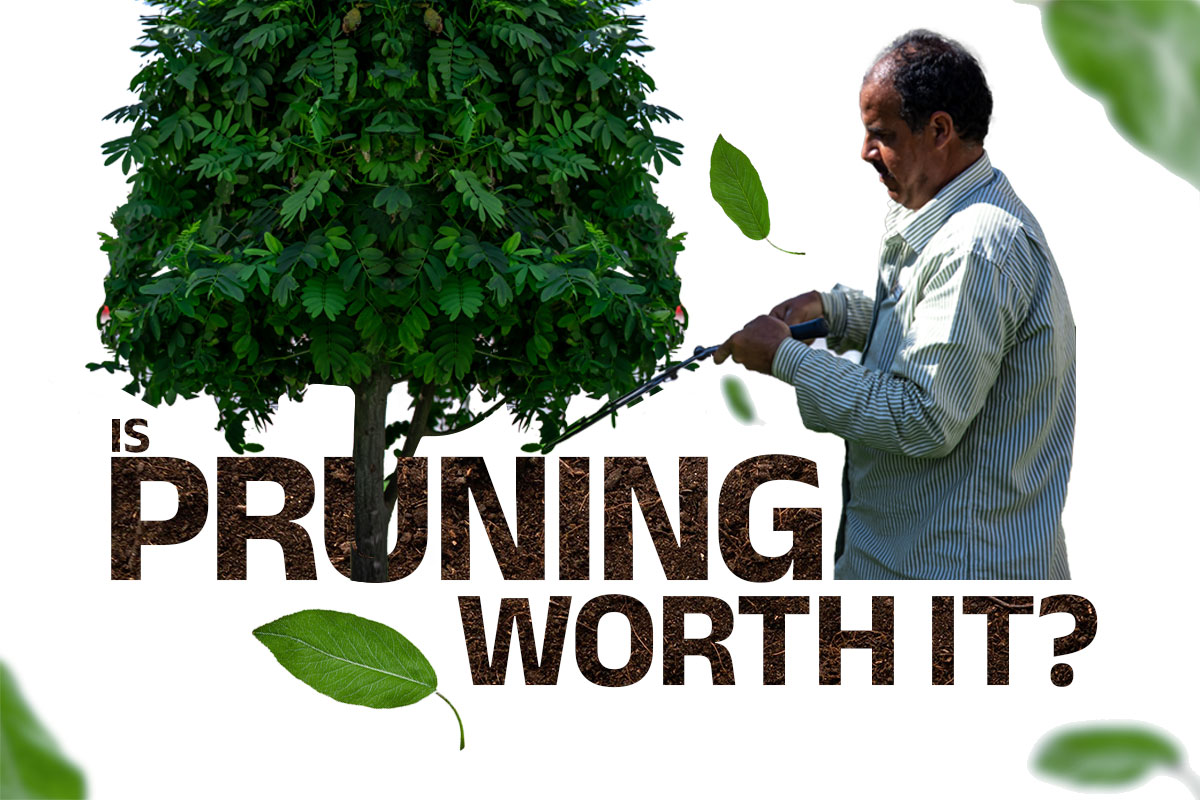Is Pruning worth it?

Before understanding if giving a shot to begin with Pruning is worth it or not, let’s clearly understand what Pruning is. It is basically the practice to cut the overgrown or weak parts of a tree like its branches or stems for example. It can be called trimming, now indeed it must have rung a bell. It is not some new rocket science concept but rather something which has always existed, yet its importance has not been justifyingly emphasised.
So why one should even begin to think to adopt this practice of cutting down the overgrown parts, why take the extra effort? What fruits can it bear?
Pruning can give a boost to the growth of the plant as the process involves removing the parts like the branches and even roots sometimes which might hinder the healthy growth of the plant. After it’s done, there are vital benefits that the plant experiences like enough amount of sunlight is reached to every part along with the proper supply of air. It will also give an attractive makeover to the appearance of the plant and yes then you will see this little extra effort will be bearing fruits and flowers, which are also of better quality than before. It just makes the whole experience so much better than before.
There are four major methods which can be observed when it comes to Pruning:
- Thinning- This kind of Pruning strives to help sunlight and air to reach the tree in a better capacity. It involves mainly focusing on the removal of live branches from the outer portions.
- Cleaning- It revolves around the idea of the removal of weak or broken branches which have the possibility of breaking down eventually and can maybe even attract insects.
- Reducing- The prime focus is the reduction of the area covered by the tree with respect to its width and/or height because t might hinder the appearance along with the problems it can cause to the structures around it.
- Raising- It focuses on removing the lower parts like the lower branches of the tree which might come in between the wires or the buildings around.
Some people engage in the pruning of their plants and trees and then sometimes find themselves going down the road of tree topping. What is tree topping? Another vague concept? No, It is basically murdering healthy trees by removing their large branches or other parts in huge amounts which will eventually lead to their destruction and decay at the end. So, be careful and properly educated before touching your plants. It should only be carried out when there are no other options left. It is so rightly said that too much of something can make us regret more than before. For example, tree topping can be done in case to minimise the damage that can be caused by natural calamities for example storms, so many trees fall down which results in causing further damage to human lives and important properties which might have used investments in terms of time and money and of course human labour.
There is a very interesting correlation that can be established between the pruning of trees and human relationship choices. We humans need to cut off our ties with a few toxic and unwanted people and habits in order to grow as better and stronger people just like those trees that need pruning to look more in shape and bear quality fruits and flowers. It is really strange how all living beings are connected in some way or the other, just like those trees, we humans might even fall apart if the important parts of us are taken away from us. Mother nature might have made all of us very different but as we can observe around us, all living beings are similar too in some ways.
So, very evidently now we all can now agree that without carrying out this process of pruning, the plant will not only look unappealing but also become an attraction to only problems like insects and sometimes even rot. Again, just like humans, if plants are not given regular health check-ups, they will fall apart eventually. To avoid this unwanted situation, let’s start maintaining our plants and trees more responsibly and of course with an informed approach.
